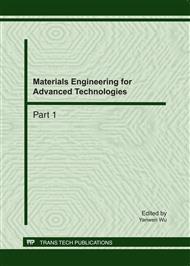p.283
p.288
p.294
p.300
p.306
p.311
p.317
p.323
p.329
Cyclic Deformation Behaviour of China Railway Grade B Cast Steel Wheel
Abstract:
Cyclic deformation behaviour is experimentally investigated using an incremental step method under a spectrum straining block loading mode for China grade B cast steel wheel. Results reveal that the material acts cyclically as non-Masing behaviour with a Bausinger effect. Different from monotonic tensile situation, material under fatigue loads was subjected to a plastic dissipation process without a yielding sign. Fatigued areas of specimen fracture surfaces are around 35%. Cyclic stress-strain (CSS) curve exhibits constant lower than monotonic tensile curve. Difference is enlarged as strain level increasing in elastic regime of the monotonic deformation. And this difference sustains a level of around 100 MPa as over yielding point. In addition, randomness is also observed for the present cyclic deformations. It indicates that random CSS relations should be comprehensively applied even if under stress based fatigue analysis.
Info:
Periodical:
Pages:
306-310
Citation:
Online since:
June 2011
Authors:
Keywords:
Price:
Сopyright:
© 2011 Trans Tech Publications Ltd. All Rights Reserved
Share:
Citation:


